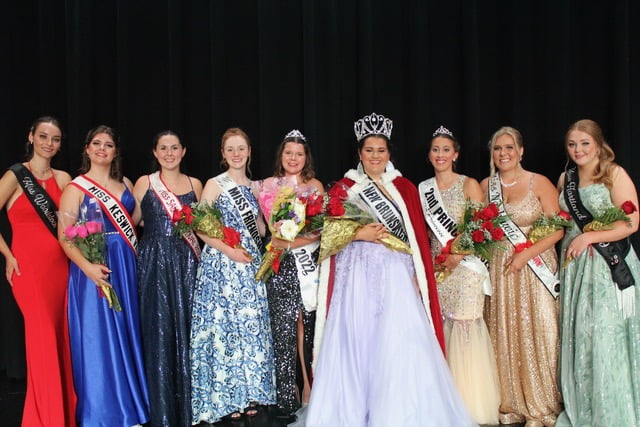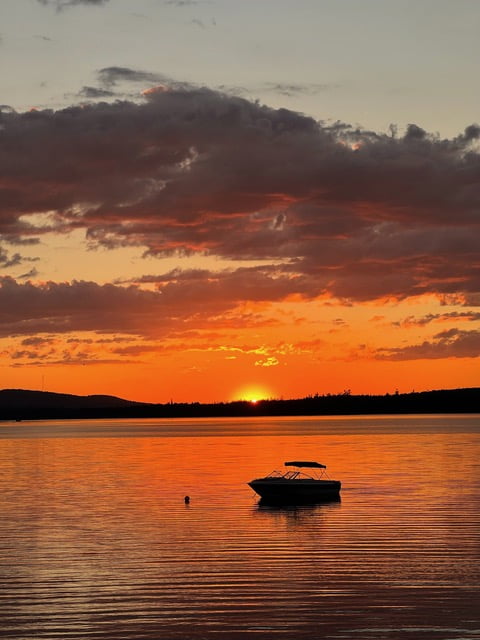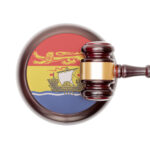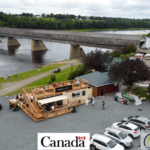Council hoping to find ways to manage the nuisance
Representatives from the Canadian Wildlife Service (CWS) attended the Nackawic-Millville council meeting on Monday, Oct. 20, to present information and ideas on how to address the ongoing geese issue along the Nackawic waterfront. There have been several complaints made to the town office regarding goose feces in that area.
CWS officials Ted Barney and Jacinthe Cormier presented several ideas to the council for managing nuisance geese. They pointed out that the geese are here for habitat, and there is no quick, easy solution.
The goose population tends to increase where conditions are favourable, such as landscape-level conditions which benefit them. Current conditions make the Nackawic waterfront a perfect home for them from spring to fall.
The Town of Nackawic addressed this issue in 2011, when it received a permit to cull up to 250 Canada geese to address the mess and public nuisance they were causing along the waterfront. They applied and received a kill permit from the Canadian Wildlife Service.
At the time, Nackawic had a flock of roughly 300 geese. Before the cull, the town planted rose bushes and other shrubs along the waterfront, hoping to deter the geese. Barney said that culling or depopulating is not effective, as new geese will move in.
The CWS said that dealing with the geese issue is a balancing Act. Their objective is to implement a plan to reduce conflict between Canada geese and people.
The officials explained that at two to three years of age, they start breeding. Geese have a lifespan of approximately 15-20 years and hatch five to six goslings per year (sometimes up to 10 goslings). There is a 25-day incubation period for eggs. They hatch around early May. It takes about 60 days until the young can fly. They moult in early June and are flightless for four to six weeks (early to mid July).
Canadian geese establish territories in early April, so it is the best time of year to discourage them from nesting. Geese tend to move to better feeding sites in August (They eat for 8-12 hours a day) and will travel in family groups to places they feel safe.
To start dealing with the geese, the municipality will need to begin in April and May to prevent them from nesting. Many ideas that were discussed in the presentation include: reduce access to land/water by using fencing, snow fencing, rebar, rough and tall vegetation; scare tactics using trained dogs, humans, and noisemakers; reduce the amount of mown grass to impede travel and increase predator concealment; reduce fresh cut grass to lessen nutrition and make them work harder for food. They will choose to go somewhere where it is easier to find food.
Other ideas, like LED lights on open water, disturb their roost sites. Sterilizing their eggs by shaking them or applying oil is also effective if you can find their nests. This reduces goslings. The key is to get nesting ones, not to nest. Have them not want to be here.
Scaring them while they are flightless only scares them to the water, and then they come back. It was emphasized that, to use a scare tactic, use a variety of tactics at random, so they don’t learn it is just a trick. For example, using a laser and a loud noise simultaneously shows every bird that it’s not safe. Additional methods include using kites, balloons with big eyes like a predator, and umbrellas (open and close motions to push birds away from an area). They also don’t like swimming under sprinklers and fountains, and a water fence was suggested for the boat launch area.
The geese want a place that’s easier to reach and where it’s easier to get food. The municipality could build a fence hidden by vegetation that they can’t jump over, and implement a feeding bylaw that prohibits feeding birds. If they decide to use a drone, they will need a permit. The CWS also mentioned that motorized boats work well and are a good tool for flightless time when they usually go to the water for safety.
The organization suggested applying in early January if any permits are needed. For a cull permit, a detailed long-term plan will be required (like the one the community submitted in 2011), and the Canadian Wildlife Service must approve it.
Councillors noted that the geese seemed like a bigger issue this summer because of the dry areas, which forced them to move farther inland in search of food.
The presentation emphasized that geese are very smart and can identify people and vehicles. Hence, a variety of solutions need to be tried to have any impact on getting the flock to move from the area.
The CWS strongly recommended starting a variety of deterrence measures early. It was also suggested that the municipality reach out to other municipalities across the country for ideas.
Council was encouraged by the presentation. Barney and Cormier also emphasized the importance of communicating the plan publicly in multiple ways so that the public is not surprised to see some of these tactics being implemented.















